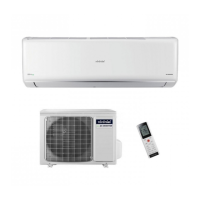
Do you have a question about the Toyotomi HTN/HTG-09IV and is the answer not in the manual?
| Brand | Toyotomi |
|---|---|
| Model | HTN/HTG-09IV |
| Category | Air Conditioner |
| Language | English |
Specifies that the appliance is not for persons with reduced capabilities unless supervised; children need supervision.
States children aged 8+ can use with supervision and cleaning by children requires supervision.
Advises avoiding multi-sockets, disconnecting power for cleaning, and professional cord replacement.
Emphasizes that maintenance must be performed by qualified professionals and not self-repaired.
Lists warnings for overheating, abnormal sound, breaker trips, burning smell, leaks, and emergency switch use.
States installation must be by professionals, following electric safety regulations and using qualified power supply/breaker.
Details requirements for disconnection switch, grounding, power cord, power supply matching, and power cutoff before work.
Do not power on until installation is finished. Professional replacement for damaged cords. Keep refrigerant cable away from copper tube.
Install per national wiring regulations. Class I appliance needs specialized grounding. Plug accessibility is required.
Ensures plug is reachable after installation and a circuit breaker is installed for plugless units.
Explains the functions of ON/OFF, MODE selection cycle, and temperature adjustment (+/-).
Details the functions for FAN speed, swing controls, and the HEALTH SAVE feature.
Details ON/OFF function and MODE cycle. Explains AUTO mode default behavior.
Explains temperature decrease/increase and fan speed settings for optimal comfort.
Warns to clean filters quarterly, avoid touching fins, and not use fire/hair dryers for drying.
Table of error codes (E5, E8, U8, H6, C5, F1, F2) with basic troubleshooting steps.
Follow safety regulations, use qualified supply/breaker, match power, connect wires correctly, cut power before work.
Class I appliance needs professional grounding. Yellow-green wire is ground. Ensure compliance and plug accessibility.
Checklist for installation firmness, leaks, insulation, drainage, voltage, wiring, grounding, air flow, dust, and valves.
Details powering on the unit and checking operation in various modes.
Describes methods for detecting leaks using a detector or soap water.
Steps A & B: Confirm pipe length, cut pipe with cutter, and remove burrs with shaper.
Step E: Expand the pipe port using an expander, noting dimension 'A' variations.
Step F: Check the quality of the expansion port and re-expand if any anomalies are found.
Installation by authorized technician. Follow local rules, use correct power circuit, install fuse, use 3-pole switch.
Consult table for fuse. Ensure proper grounding. Use correct power cord. Match power supply. Connect wires correctly. Disconnect power before work.
Follow national wiring regulations. Installation by authorized technician. Ensure proper grounding. Plug accessibility.
Explains HEALTH SAVE, SAVE mode, BLOW function for drying, and TEMP display options.
Emphasizes turning off power before cleaning and avoiding water or volatile liquids.
Troubleshooting for no remote signal or action, covering interference, range, obstacles, pointing, and batteries.
Troubleshooting for blocked vents and normal heating operation when temperature is reached.
Troubleshooting for power interruption, loose plug, faulty breaker, cord issues, or unit restart.
Troubleshooting temperature adjustment issues, range limits, low voltage, dirty filters, and performance.
Table of error codes (E5, E8, U8, H6, C5, F1, F2) with recommended actions.
Critical warnings for overheating cord, noise, breaker trips, burning smell, leaks. Contact service immediately.
Follow regulations. Use qualified supply/breaker. Match power. Connect wires. Disconnect power. Replace cord. Refrigerant cable safety.
Details professional grounding requirements, yellow-green wire use, resistance compliance, and plug accessibility.
Table listing recommended circuit breaker capacity for models (09K, 12K, 18K).
Detailed steps for connecting hoses, operating the pump, checking pressure, and opening valves.
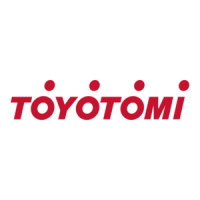
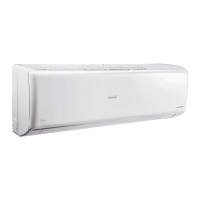
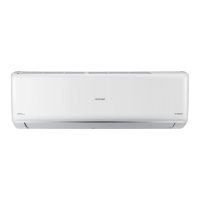

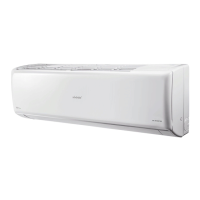
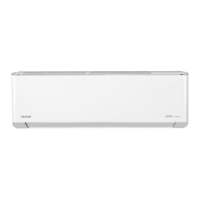

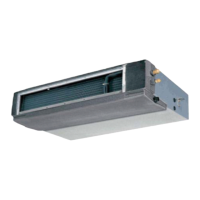
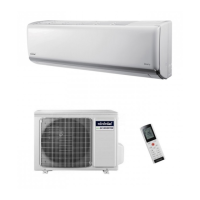

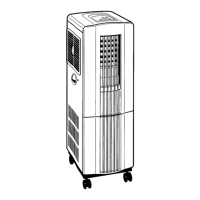
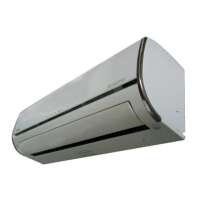
